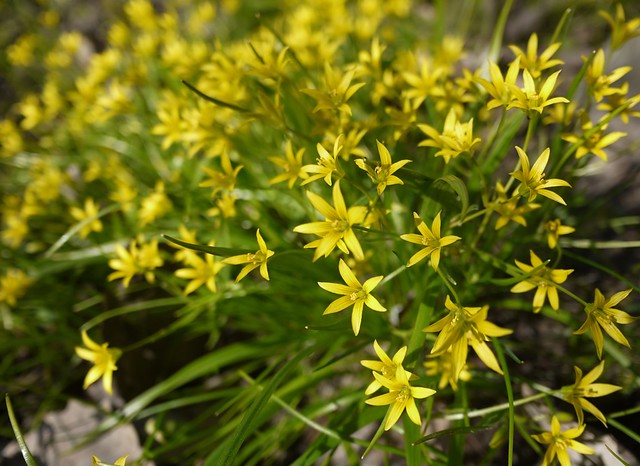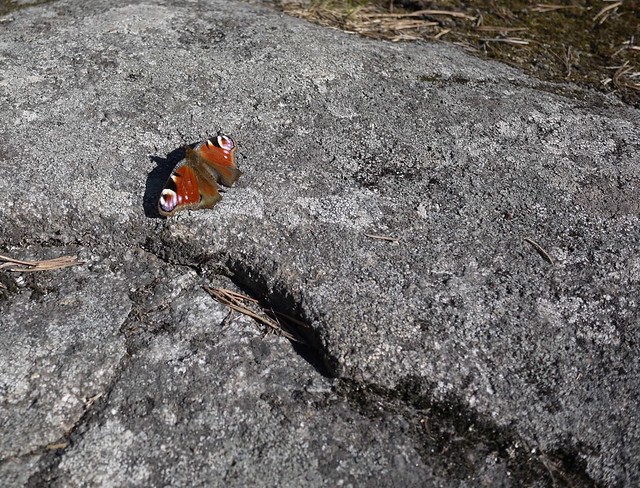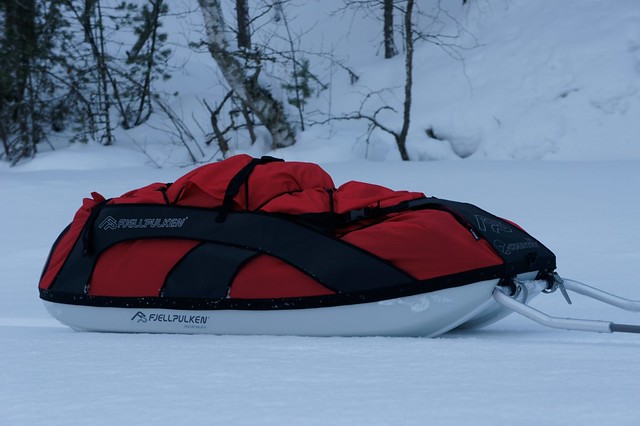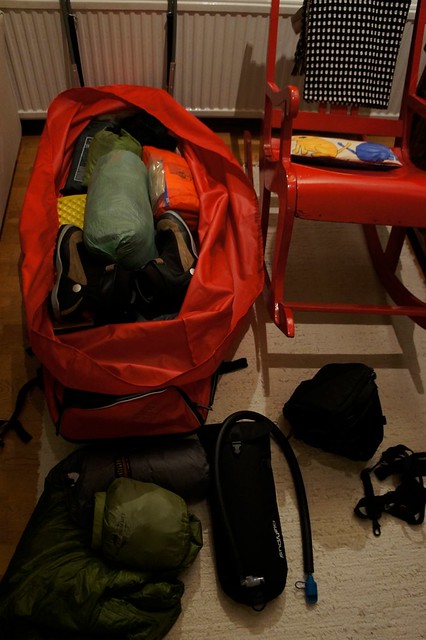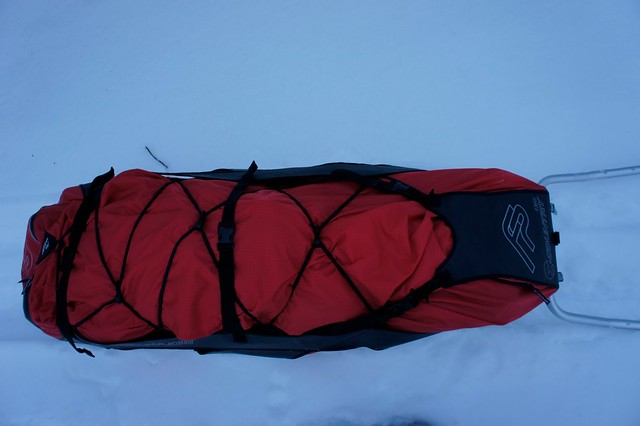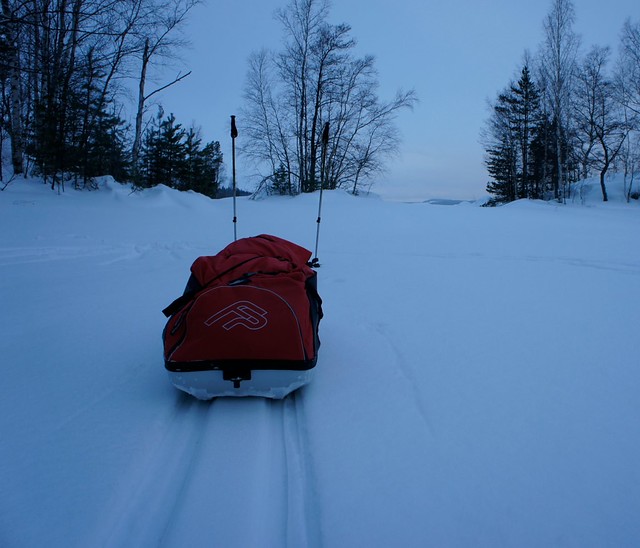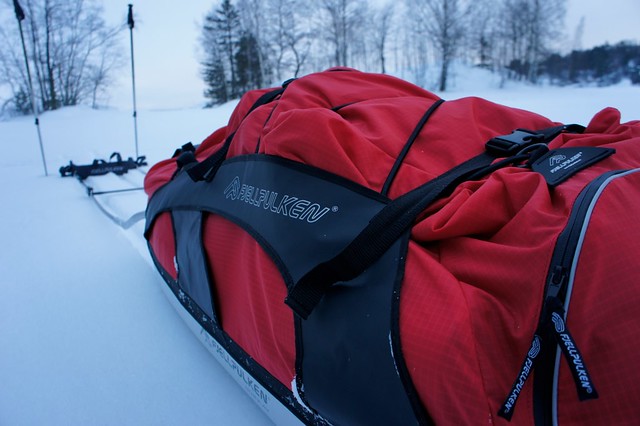I have used and written (and videotaped) a lot about backpacks, and there is more to come. And while all those rucksacks are great I feel that I have yet to find the one rucksack which does it all.
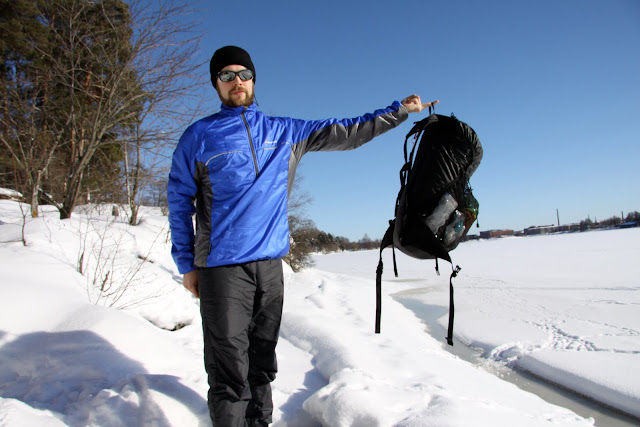
My black silnylon huckePACK certainly sees a lot of action.
The UL philosophy is something I not only apply to backpacking and gear, but also to my everyday live. I don't want to have five different packs, I want one which does it all - and I know I'm not alone with that want. And while the thought and possibilities are there for this want to be fulfilled, I am not certain if it is feasible.
The main problem is the different activities I exercise - backpacking, day hiking, packrafting, climbing, skiing, snowshoeing, travelling, grocery shopping and soon bikepacking - which all have different requirements for a pack - or lets say I have different requirements for different activities. For bikepacking I only want a minimal pack which holds a water reservoir, for climbing I want a bombproof pack which I can throw down a wall if necessary, for packrafting it needs to be 100% waterproof and carry my packraft, skiing and snowshoeing packs need to be able to withstand -40°C and carry the gear, a day hiking pack doesn't need to be bigger than 20 liters and a backpacking pack should be flexible enough to carry volumes between 25 and 60 liters.
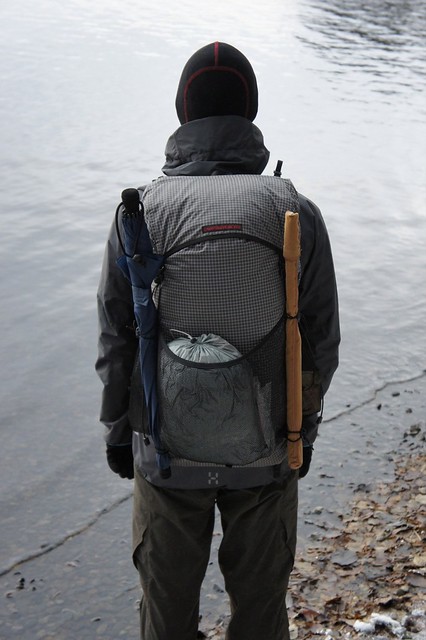
The DXG huckePACK also has seen a lot of different trips.
You see, many different needs, and while all those needs could be rolled into one pack, it would be one pack which wouldn't be as efficient as more specialized packs for their different needs. Ein Teufelskreis!
However, I decided that it needs to be possible to minimize the amount of packs to two which cover the different activities and needs. This will still include certain trade-offs, but I'd be happy to have less stuff flying around the house and live a more minimalistic life. The main difficultly will be to find the right volume and feature set. I dislike too big packs with lots of empty space, and while for example the GoLite comPACKtor system is a good idea and works well, I still am not 100% happy with it.
So two packs to rule them all, what would be their requirements? The smaller pack probably will have less than 35 liters volume, no hipbelts (I haven't used a hipbelt in months and find them increasingly annoying - with an UL payload you don't need a hipbelt, in my opinion), no frame, and very limited extras. I am quickly getting rid of hipbelt pockets, things which I hailed as the best thing since M's Banana cake, and also am decreasingly relying on sidepockets. Yes, they're useful, but often I could just as well use the front pocket - which I'd keep. Trailpole holders would remain, and a ULA Ohm like compression system needs to be on board. S-Shaped shoulder straps and a removable sternum strap, with one hose exit would round out this pack. Usage for this pack would be bikepacking, day hiking, week long work, travel and backpacking trips, climbing, skiing & snowshoeing (day trips only) as well as grocery shopping (My dedicated grocery shopping backpack is a Haglöfs Tight Evo - excellent pack but too heavy!). If it be fairly water resistant and durable enough to bushwack and slide down a granite wall, that be perfect, thanks.
Pack number two would be for the seriously long trips of seven plus days in summer as well as winter, for packrafting and climbing trips which need some walking in. It should carry skis, snowshoes, ice axes and a 60m rope, have a volume of 55+ liters, be frameless (Yeah, frameless. Against the current trend of requiring stays in every goddamn backpack I think frameless packs are the way to go. Learn to pack your pack correctly and you don't need stays), no hip or sidepockets, an ULA Ohm-like compression system, carry a packraft in a comfortable manner*, a hipbelt which easily folds out of the way and some of the before mentioned features (S-Shaped shoulder straps, removable sternum strap, one hose exit, front pocket) as well as a lid pocket. Again fairly water resistant and durable while being lightweight. In short, die Eierlegende Wollmilchsau.
Briefly on material, the options are to go with the wonderful light, not very wonderful oil-based materials of Dyneema, Cuben, XPac, Silnylon et al. or look for more environmentally friendly yet light materials. EtaProof, linen, silk all come to my mind, and while they have shortcomings, it is all a trade-off in the end. I more and more tend to think in the environmentally friendly, slightly heavier material direction - which is the opposite of where the industry is going (with exception of Klättermusen). Maybe it is time I enter the market myself?
Do these packs exist? No. Some do get close but none I have used or seen yet are what I want to fulfill all needs and wants. My needs, that is. Your needs might be completely different, and you also might be happy to have ten plus backpacks at home, one for every option - which in itself is an UL principle - take the appropriate gear for the given trip. Bit of a paradox there, right? Ah well. While Colin Ibbotson's Tramplite packs with interchangeable skins look like they could fulfill my need, they have a frame, too much volume for me and would come with extra parts to swap around - again something I'd like to avoid. Also, October is a long time away, so the search and sewing continues.
----
*The ULA Epic is a good packraft carrying pack. A problem, which I will explain in detail in a future review of the pack, is that the packraft is carried at an too low point. The packraft should be carried pretty much slightly above your hips and close to the back so that its weight isn't hanging around your ass. While this is possible the pack is designed to carry the packraft too far down, and carring it higher involves some smart packing.
My black silnylon huckePACK certainly sees a lot of action.
The UL philosophy is something I not only apply to backpacking and gear, but also to my everyday live. I don't want to have five different packs, I want one which does it all - and I know I'm not alone with that want. And while the thought and possibilities are there for this want to be fulfilled, I am not certain if it is feasible.
The main problem is the different activities I exercise - backpacking, day hiking, packrafting, climbing, skiing, snowshoeing, travelling, grocery shopping and soon bikepacking - which all have different requirements for a pack - or lets say I have different requirements for different activities. For bikepacking I only want a minimal pack which holds a water reservoir, for climbing I want a bombproof pack which I can throw down a wall if necessary, for packrafting it needs to be 100% waterproof and carry my packraft, skiing and snowshoeing packs need to be able to withstand -40°C and carry the gear, a day hiking pack doesn't need to be bigger than 20 liters and a backpacking pack should be flexible enough to carry volumes between 25 and 60 liters.

The DXG huckePACK also has seen a lot of different trips.
You see, many different needs, and while all those needs could be rolled into one pack, it would be one pack which wouldn't be as efficient as more specialized packs for their different needs. Ein Teufelskreis!
However, I decided that it needs to be possible to minimize the amount of packs to two which cover the different activities and needs. This will still include certain trade-offs, but I'd be happy to have less stuff flying around the house and live a more minimalistic life. The main difficultly will be to find the right volume and feature set. I dislike too big packs with lots of empty space, and while for example the GoLite comPACKtor system is a good idea and works well, I still am not 100% happy with it.
So two packs to rule them all, what would be their requirements? The smaller pack probably will have less than 35 liters volume, no hipbelts (I haven't used a hipbelt in months and find them increasingly annoying - with an UL payload you don't need a hipbelt, in my opinion), no frame, and very limited extras. I am quickly getting rid of hipbelt pockets, things which I hailed as the best thing since M's Banana cake, and also am decreasingly relying on sidepockets. Yes, they're useful, but often I could just as well use the front pocket - which I'd keep. Trailpole holders would remain, and a ULA Ohm like compression system needs to be on board. S-Shaped shoulder straps and a removable sternum strap, with one hose exit would round out this pack. Usage for this pack would be bikepacking, day hiking, week long work, travel and backpacking trips, climbing, skiing & snowshoeing (day trips only) as well as grocery shopping (My dedicated grocery shopping backpack is a Haglöfs Tight Evo - excellent pack but too heavy!). If it be fairly water resistant and durable enough to bushwack and slide down a granite wall, that be perfect, thanks.
Pack number two would be for the seriously long trips of seven plus days in summer as well as winter, for packrafting and climbing trips which need some walking in. It should carry skis, snowshoes, ice axes and a 60m rope, have a volume of 55+ liters, be frameless (Yeah, frameless. Against the current trend of requiring stays in every goddamn backpack I think frameless packs are the way to go. Learn to pack your pack correctly and you don't need stays), no hip or sidepockets, an ULA Ohm-like compression system, carry a packraft in a comfortable manner*, a hipbelt which easily folds out of the way and some of the before mentioned features (S-Shaped shoulder straps, removable sternum strap, one hose exit, front pocket) as well as a lid pocket. Again fairly water resistant and durable while being lightweight. In short, die Eierlegende Wollmilchsau.
Briefly on material, the options are to go with the wonderful light, not very wonderful oil-based materials of Dyneema, Cuben, XPac, Silnylon et al. or look for more environmentally friendly yet light materials. EtaProof, linen, silk all come to my mind, and while they have shortcomings, it is all a trade-off in the end. I more and more tend to think in the environmentally friendly, slightly heavier material direction - which is the opposite of where the industry is going (with exception of Klättermusen). Maybe it is time I enter the market myself?
Do these packs exist? No. Some do get close but none I have used or seen yet are what I want to fulfill all needs and wants. My needs, that is. Your needs might be completely different, and you also might be happy to have ten plus backpacks at home, one for every option - which in itself is an UL principle - take the appropriate gear for the given trip. Bit of a paradox there, right? Ah well. While Colin Ibbotson's Tramplite packs with interchangeable skins look like they could fulfill my need, they have a frame, too much volume for me and would come with extra parts to swap around - again something I'd like to avoid. Also, October is a long time away, so the search and sewing continues.
----
*The ULA Epic is a good packraft carrying pack. A problem, which I will explain in detail in a future review of the pack, is that the packraft is carried at an too low point. The packraft should be carried pretty much slightly above your hips and close to the back so that its weight isn't hanging around your ass. While this is possible the pack is designed to carry the packraft too far down, and carring it higher involves some smart packing.
